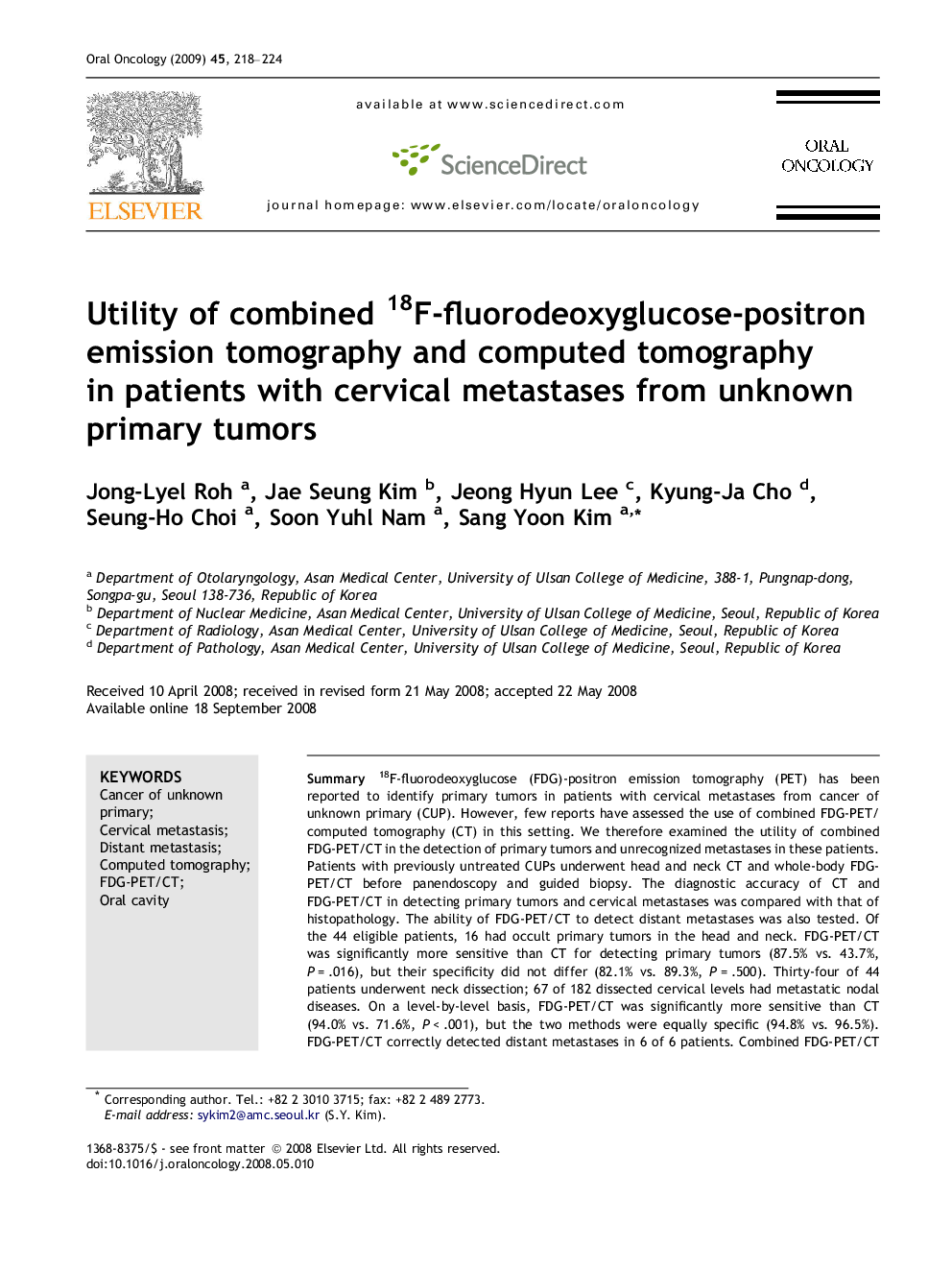| Article ID | Journal | Published Year | Pages | File Type |
|---|---|---|---|---|
| 3165667 | Oral Oncology | 2009 | 7 Pages |
Summary18F-fluorodeoxyglucose (FDG)-positron emission tomography (PET) has been reported to identify primary tumors in patients with cervical metastases from cancer of unknown primary (CUP). However, few reports have assessed the use of combined FDG-PET/computed tomography (CT) in this setting. We therefore examined the utility of combined FDG-PET/CT in the detection of primary tumors and unrecognized metastases in these patients. Patients with previously untreated CUPs underwent head and neck CT and whole-body FDG-PET/CT before panendoscopy and guided biopsy. The diagnostic accuracy of CT and FDG-PET/CT in detecting primary tumors and cervical metastases was compared with that of histopathology. The ability of FDG-PET/CT to detect distant metastases was also tested. Of the 44 eligible patients, 16 had occult primary tumors in the head and neck. FDG-PET/CT was significantly more sensitive than CT for detecting primary tumors (87.5% vs. 43.7%, P = .016), but their specificity did not differ (82.1% vs. 89.3%, P = .500). Thirty-four of 44 patients underwent neck dissection; 67 of 182 dissected cervical levels had metastatic nodal diseases. On a level-by-level basis, FDG-PET/CT was significantly more sensitive than CT (94.0% vs. 71.6%, P < .001), but the two methods were equally specific (94.8% vs. 96.5%). FDG-PET/CT correctly detected distant metastases in 6 of 6 patients. Combined FDG-PET/CT is a useful screening method for primary tumor detection, accurate nodal staging, and distant metastases in patients with CUPs.
